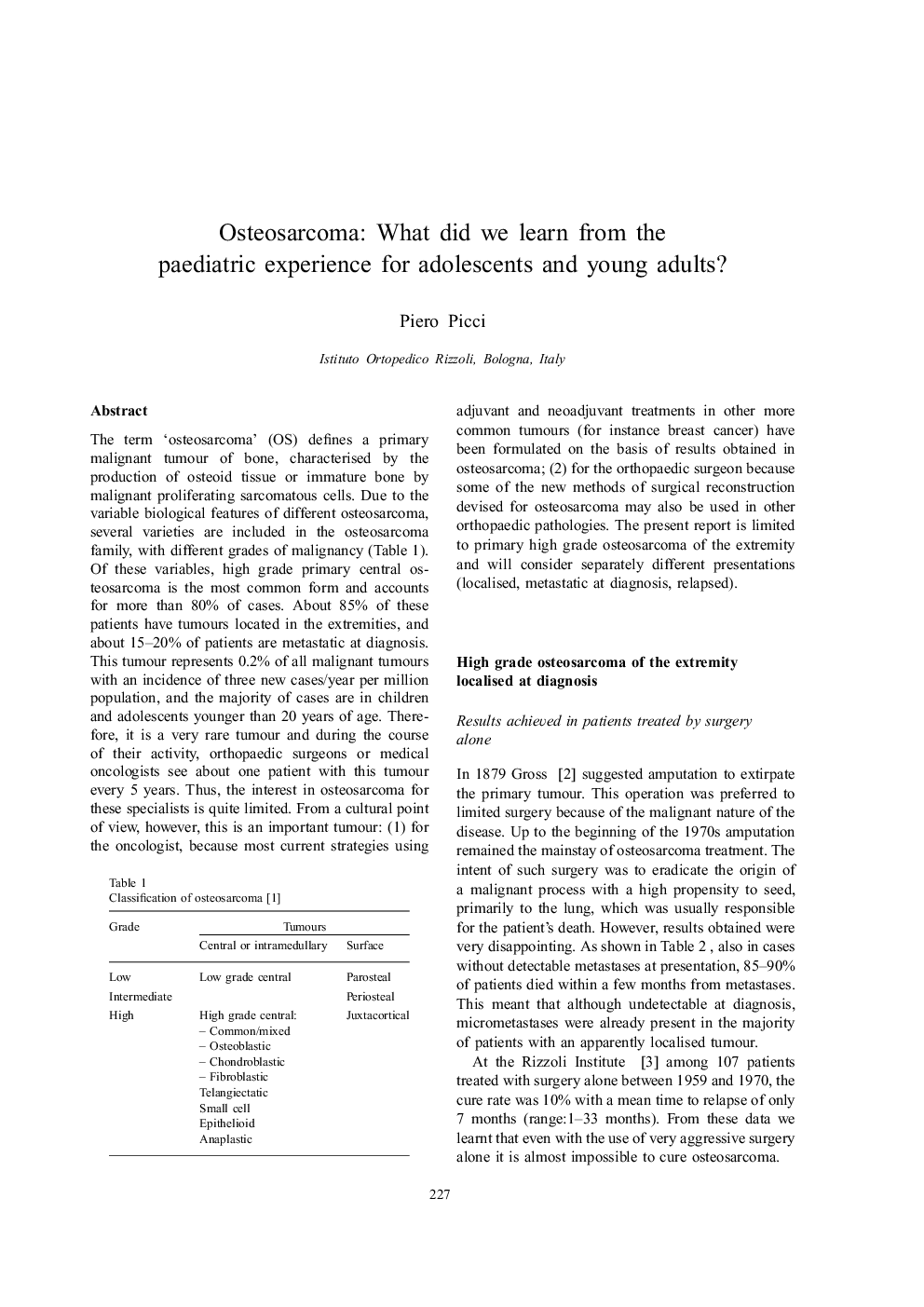| Article ID | Journal | Published Year | Pages | File Type |
|---|---|---|---|---|
| 2129619 | European Journal of Cancer Supplements | 2007 | 8 Pages |
The term ‘osteosarcoma’ (OS) defines a primary malignant tumour of bone, characterised by the production of osteoid tissue or immature bone by malignant proliferating sarcomatous cells. Due to the variable biological features of different osteosarcoma, several varieties are included in the osteosarcoma family, with different grades of malignancy (Table 1). Of these variables, high grade primary central os- teosarcoma is the most common form and accounts for more than 80% of cases. About 85% of these patients have tumours located in the extremities, and about 15–20% of patients are metastatic at diagnosis. This tumour represents 0.2% of all malignant tumours with an incidence of three new cases/year per million population, and the majority of cases are in children and adolescents younger than 20 years of age. There- fore, it is a very rare tumour and during the course of their activity, orthopaedic surgeons or medical oncologists see about one patient with this tumour every 5 years. Thus, the interest in osteosarcoma for these specialists is quite limited. From a cultural point of view, however, this is an important tumour: (1) for the oncologist, because most current strategies using adjuvant and neoadjuvant treatments in other more common tumours (for instance breast cancer) have been formulated on the basis of results obtained in osteosarcoma;(2)for the orthopaedic surgeon because some of the new methods of surgical reconstruction devised for osteosarcoma may also be used in other orthopaedic pathologies.The present report is limited to primary high grade osteosarcoma of the extremity and will consider separately different presentations (localised, metastatic at diagnosis, relapsed).
